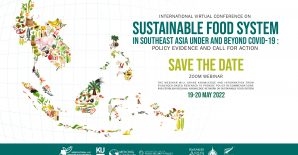Papua New Guinea (PNG) experienced positive GDP growth of approximately 4.3% per year during the last decade. With increases in overall wealth within the country, PNG is facing a double burden of malnutrition: comparatively high child stunting rates and a growing overweight and obesity epidemic. We focus on the latter by evaluating trends in agri-food import data from 2001 to 2018 and household consumption data from 2018 and 2009/10.
The analysis presented in this paper raises three red flags. First, international food import data suggest that the demand for ultra-processed, sugar-sweetened beverages and food have increased substantially over time in PNG. Sugar-sweetened beverages dominated the largest growth in processed food imports, increasing by 23% per capita per year between 2001 and 2018. Second, households across the country with a greater food expenditure on sugar-sweetened beverages have a higher probability of an overweight child (under 5 years old). Last, the probability of soft-drink consumption in PNG increases with greater income acquisition and improved market access. While the price of a soft drink is negatively correlated with the quantity consumed, analysis suggests that total household income has a quantitatively larger (and positive) association with soft drink consumption.
Taxing (or increasing taxes on) sugar-sweetened beverages may not be a sufficient policy mechanism to curb overconsumption of soft drinks in PNG. Education and advocacy programs should be fostered that integrate improved dietary information on packaging, as well as greater access to and understanding of nutrition and diet information of common household consumption items. While increases in household income and market access are crucial to economic growth and transformation, PNG’s economic transition must be dovetailed with programs that expand and enhance health and nutrition information and education to improve household consumption decisions and overall household wellbeing.
Read the paper here.



